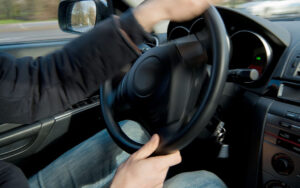Hitting the open roads is something every car lover craves. But the question is, what happens when that nice smooth run you are having all of a sudden feels like a movement in a roller coaster? Every automobile has an issue called vibrations especially at speed, and if not addressed, will take away the joy of the ride. If one is cruising along a highway or merging into heavy traffic, all those unwanted jerking motions often raise discomfort and worry.
It is essential how and why these vibrations happen so as to maintain the working mechanics of the car. This guide will help you through some fundamentals of these irritating shakes, how to identify them and what can be done to rectify the situation further into future. Let’s go in and get that riding back to how it is supposed to be once more again soon!
Reasons Why Cars Shake When Driving at High Speeds:
Car shaking at high speed takes place if there is a fault in a number of ways. One such example that can be looked at is called wheel imbalance. In case that the wheels are not within the required parameters in terms of balancing, the wheels will bring about the shaking after a certain amount of speed is reached.
It is important to know that tire problems do come in handy also. Tread wear or any other destructed tire may develop surface irregularities that cause vibration. This risk can be prevented with the help of periodic tire maintenance.
Do not neglect other parts as well. Old suspension components can significantly affect ride quality and lead to excessive shaking. This is how you will be able to know if the problem is the same regardless of conditions or if it’s only present in certain cases. Good observation is essential in determining the cause of those annoying vibrations.
Steps To Fixing The Vibration Problem:
First, it is the tires that should be checked. Make sure the tires are at the right pressure and the tread patterns are even. If the tires have been worn down on one side as compared to the other side, especially the inner knees, then under high driving speed, undue vibrations will be felt. Let wheel balancing come next. This can cause very debilitating vibrations. Drive the car to an automobile technician who will check and balance the wheels as appropriate. Also check the set of wheels you are driving. Very frequently the steering mechanism will behave inquisitively, and there will quite, during high-speed driving, be vibrations in the driving body. This can be remedied much faster by going straight to the professionals.
Suspension parts like shocks or struts should also not be ignored. Since these supports carry a lot of weight, fractions of wear and tear buildup lead to skipping and thereby forcing the components to vibrate. As you do this, watch out for the brake parts. When the brakes are applied to a set of warped rotors, looking at making the car shake even more based on the speed of the car and for various reasons, can accelerate it right away.
Preventative Maintenance Tips:
Make it a habit to look at the tire pressure. Failing to manage the tire pressure would bring about vibrations, mainly when driving at high speeds. Do not forget the company stated PSI.
Change your tires after every three months, or 5,000 to 7,500 miles. In turn, this helps level the deterioration and extends the life of the tires. Tires that have not been evenly worn would easily cause imbalances, resulting in shaking.
Watch out for the wheel alignment, repair, and balance of the car. This is a factor as a result of some bumping, such as driving into potholes or curbs, and so there should be regular checkups if there is any pulling while driving.
It is important to check outside the car to examine shock absorbers and struts to prevent any negative impact from the camera performance & geosystem. Outdated parts make the shakeup the performance of the car worse.
Pay attention to other systems in your vehicle as well. Problems will also arise in the vehicle when using high rums with steady acceleration to normal cruising speeds.
Emergencies are unavoidable, and proper diagnosis and improvement on any defects are the tips provided by this manual.
When to Seek Professional Help?
Car vibrations are sometimes associated with problems that are not as easy. If in such instances you have tried to find out the problem and fix it, then that could be a situation that should now involve the experts. If the vibrations still occur, especially at high speeds, regardless of correcting the tires or checking for loose parts, do not take them lightly. Whereas a normal technician will have tools to assist with diagnosis, a trained mechanic will have tools designed for a specific purpose and lots of experience.
In addition, look out for other symptoms such as strange noises or irregular steering responses. Closer inspection may reveal items like alignment problems or suspension issues that need a technician’s attention. You also have to follow your intuition. In such situations, it is safer to assume that the problem is greater than the vibration itself. While operating, if there is a feeling of being pulled or tugged rather than vibrating, one should avoid even the slightest risk. Your car is an asset, and there is always the need to protect it, as this will determine its efficiency in the long run.
Conclusion:
High-speed car vibrations are not only annoying, but they also pose a safety risk to occupants and other drivers on the road. If the problem is neglected, it can take on a different dimension that may extend the length of the suffering. It’s good to know what you are dealing with. Be it out-of-balance tires or tired suspension parts, getting to the issue is fifty percent of resolving it. It is not only dealing with existing issues that will solve problems. Proactive measures will guide an individual to help in increasing the lifespan of the vehicle. Doing them regularly and performing maintenance will enable you to save on costs and the time spent on repairs in the future.
The relations are clear: Taking assistance from automobile experts means you are raising the white flag. You rarely back down to such means, especially when everything is at stake. To avoid the frustration of a stuck, shaky ride due to constant changes, you must be quick in observing changes in vehicle performance. Tune out the vibration interference and enjoy the nice drives, but keep your ears out for any unusual performance changes.
FAQs:
1. What can be the reason for my car to shake when driven at high speed?
There can be several reasons for vibration, such as unbalanced tires, misalignment, worn-out suspension parts, or even brake problems.
2. When can I detect that my tires have an unbalanced rotation?
You may notice a persistent vibration in the steering wheel or the seat that comes and gets stronger with speed and decreases on slowing down; this may be a symptom of unbalanced tires.
3. Can I expect every vibration to go away with alignment?
Depending on the diagnosis done, realignment can settle most of the vibration problems, but it’s always important to identify the problem first. Damaged areas elsewhere (through worn parts) mean simply realigning will not work.
4. How dangerous is it to drive my car around when it shakes when driven at higher speed?
It is normally a ‘no no’ as vibration is generally a symptom of something mechanical that gets worse in the future and may lead to loss of car control.
5. How long before I should take my vibrating car to a mechanic?
If you have done any self-diagnosis basic things and have run out of ideas or the car continues vibrating as much, take it to the specialists without delay.




